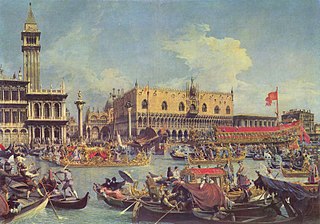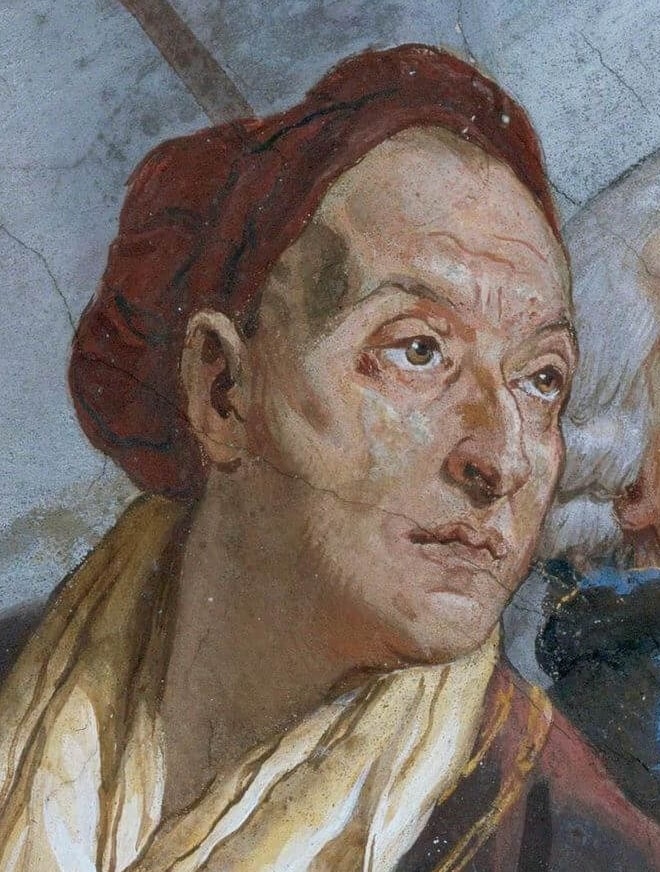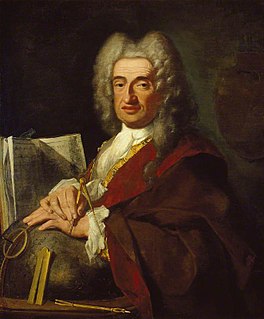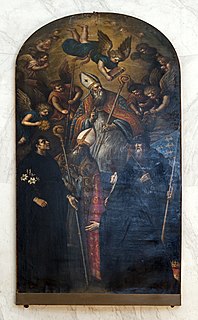| The Doge on the Bucintoro near the Riva di Sant'Elena | |
|---|---|
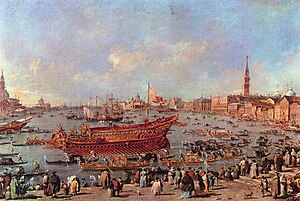 | |
| Artist | Francesco Guardi |
| Year | 1775–1780 |
| Medium | Oil on canvas |
| Dimensions | 66 cm× 100 cm(26 in× 39 in) |
| Location | Louvre, Paris |
The Doge on the Bucintoro near the Riva di Sant'Elena (also known as The Departure of the Bucentaur for the Ascension Day Ceremony, and other similar titles) is an oil on canvas by Venetian painter Francesco Guardi, a member of the Venetian School. It was painted between 1766 and 1770, and is now in the Louvre in Paris.

Venice is a city in northeastern Italy and the capital of the Veneto region. It is situated on a group of 118 small islands that are separated by canals and linked by over 400 bridges. The islands are located in the shallow Venetian Lagoon, an enclosed bay that lies between the mouths of the Po and the Piave rivers. In 2018, 260,897 people resided in the Comune di Venezia, of whom around 55,000 live in the historical city of Venice. Together with Padua and Treviso, the city is included in the Padua-Treviso-Venice Metropolitan Area (PATREVE), which is considered a statistical metropolitan area, with a total population of 2.6 million.

Painting is the practice of applying paint, pigment, color or other medium to a solid surface. The medium is commonly applied to the base with a brush, but other implements, such as knives, sponges, and airbrushes, can be used. The final work is also called a painting.

Francesco Lazzaro Guardi was an Italian painter of veduta, nobleman, and a member of the Venetian School. He is considered to be among the last practitioners, along with his brothers, of the classic Venetian school of painting.
Contents
This work is one of a series of twelve paintings representing the Solennità dogali (The Doge's Solemnities), in which the artist has faithfully copied the scenes drawn by Giovanni Antonio Canal and engraved by Giambattista Brustolon to commemorate the festivities at the coronation of the Doge Alvise Giovanni Mocenigo, in 1763. This has led to some confusion, and the canvases were formerly attributed to Canaletto, though their style was quite unmistakably that of Guardi. [1]

A doge was an elected lord and chief of state in many of the Italian city-states during the medieval and renaissance periods. Such states are referred to as "crowned republics".
A solemnity is, in the liturgical calendar of the Roman Rite, a feast day of the highest rank celebrating a mystery of faith such as the Trinity, an event in the life of Jesus, his mother Mary, or another important saint. The observance begins with the vigil on the evening before the actual date of the feast. Unlike feast days of the rank of feast or those of the rank of memorial, solemnities replace the celebration of Sundays outside Advent, Lent, and Easter.
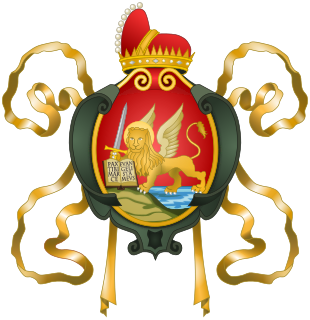
The Doge of Venice, sometimes translated as Duke, was the chief magistrate and leader of the Republic of Venice between 726 and 1797.
